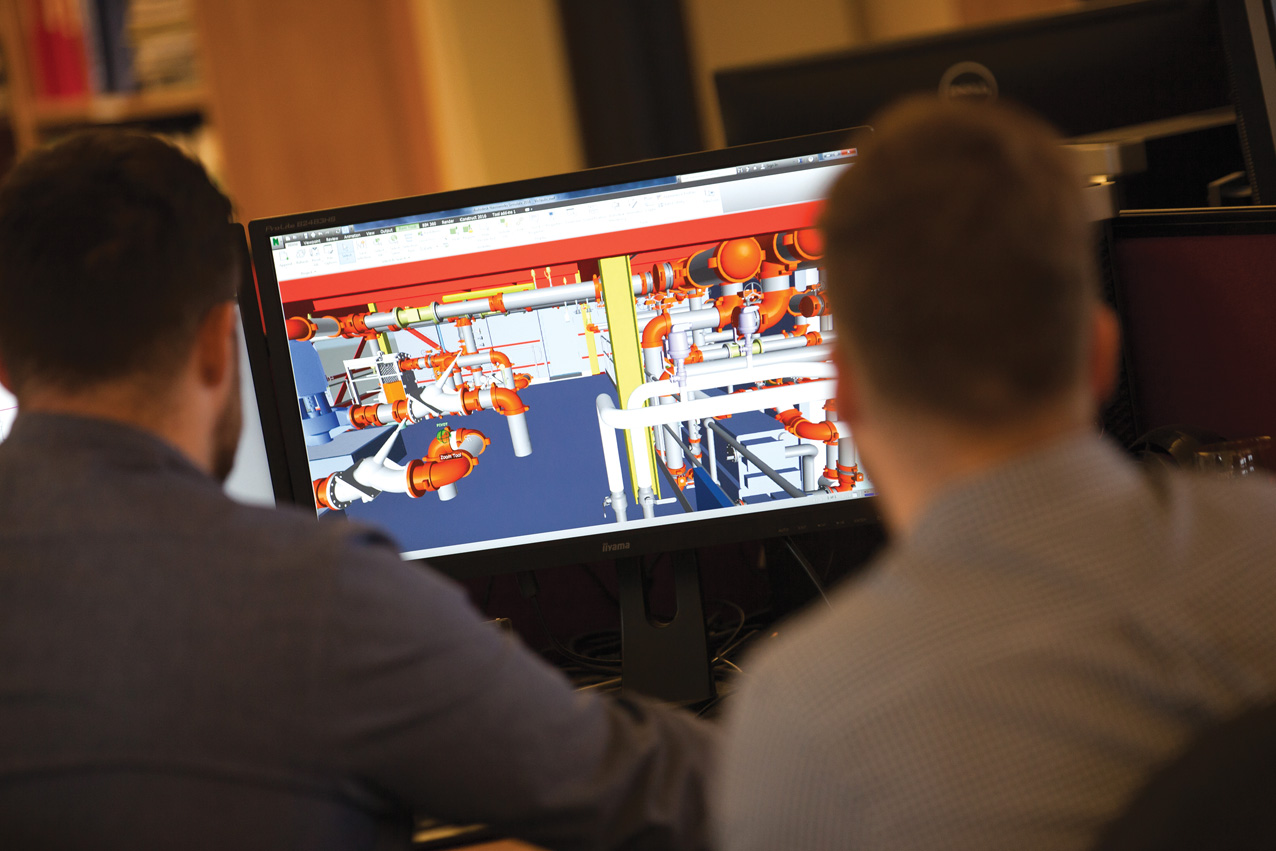he May 2018 issue of CIBSE Journal included a supplement about building information modelling (BIM) that showed how the industry is dealing with the complexities and frameworks brought about by its advent. The dizzying number of standards we have to apply were covered, and manufacturers and consultants spoke about how well they are contorting their natural design processes to meet these criteria. What it didn’t reconcile is why we are doing this.
The government asked us to modernise; the carrot and stick it used was to make BIM Level 2 a requirement on all public sector jobs by 2016 – and we painted a very lush veneer of being able to achieve this. What didn’t come to pass were many fully compliant Level 2 BIM jobs. Why not? What has curtailed BIM adoption in private sector projects? What is the alternative? We should be told.
Why BIM is no longer a useful concept
Let us first examine the meaning of BIM. Does the ‘M’ stand for modelling or management?
Building information modelling: The art of storing as much building design information as possible in one database, so there can only be one version of the truth and it can be shared freely. A sound concept. Few have seriously argued with this and few fail to grasp the benefits. Today, we tend to employ 3D modelling with some embedded data.

Credit: iStock.com/Gorodenkoff
Building information management: This describes the techniques used to ensure this new 3D model and database works, and can be handled correctly by everyone. It is simply communication – and the concept is not new. We did it in the ‘old CAD days’, but it was much simpler. Now we need to manage a much larger quantum of data, thus the requirements are more complex. Do it well and you benefit greatly; fail to plan or give it credence and you’ll watch fees evaporate before your eyes. We have to understand the power of information management and how it is the backbone required to transform how we define, design, build, commission and operate new buildings. However, we assumed BIM was really just modelling and the information management would follow along naturally. This did not happen.
When we regard both these definitions, we get: BIM = 3D modelling + information management. Thus, there are two strands to BIM: 3D modelling and information management.
We have been told that Level 2 BIM is the rigid framework we must adopt. Those are the rules. Since when has strict adherence to byzantine doctrine been the answer to a dynamic and changing marketplace?
Level 2 BIM only leads to the conclusion that BIM takes too long and costs too much. Why don’t we, instead, look at the improved capabilities that BIM could give us and choose the functions that fit the profile of our projects and give tangible benefits to it?
It’s fair to say the design phase of projects is no quicker, cheaper or easier as a result of BIM, but we are able to do higher-quality designs using significantly more advanced tools compared to the ones we had 10 years ago.
The real gains come as the project moves onto site and contractors use the models to carry out virtual builds, and design for off-site manufacture and assembly, which – if the design phase is planned correctly – can start to show money and time savings, as well as welcome increases in on-site safety.
In theory, these wonderful data-rich models can give our clients great benefits, depending on the building type, the client and, of course, the design budget. Despite being vaunted as the ultimate beneficiaries of BIM, however, our clients are struggling to get on board with these benefits, as the technology and data structures required to exploit them are proving difficult to realise. The solution always appears just around the corner.
What is the alternative?
We are lucky the UK government had the foresight to force us, by fair or foul means, to toe this BIM line. It has made the entire industry – which is not famed for being reactive and open to change – sit up, take notice and start to upskill in techniques that other industries have called standard practice for decades. This wasn’t easy and we have not found it so, but, overall, it has worked. We are now in a position where 3D modelling is the norm, data and geometry are no longer separate, and complex calculations are becoming more routine.
We need to get rid of the one-size-bloats-all approach that BIM has given us and start to look at these basic concepts for what they are: engineering using digital tools
It is clear, though, that we are now at the stage where we need to adopt a more intelligent and bespoke approach to delivering projects. We need to get rid of the one-size-bloats-all approach that BIM has given us and start to look at these basic concepts for what they are: engineering using digital tools. We must stop talking about BIM and, instead, start talking about digital engineering.
Why kill BIM?
If we continue to apply the blunderbuss approach, we will not allow each project’s own profile and needs to take centre stage. We shall continue to force onto projects activities that swallow time and fee, and deliver no benefits (COBie, I am looking at you). Just because a hoop exists, does not mean we must leap through it. Only jump if jumping takes us somewhere valuable.
Design teams that work together to find better, more streamlined ways of delivering what the client needs – sometimes doing more where value is apparent, but holding back in activities where no benefit will arise – lead the way in successful design. They use the tools that the digital world has brought: generative design, AI-influenced calculations, coherent, flexible information management, and so on.
Argent, which is redeveloping the King’s Cross area in London, is an example of a private client that tries new techniques on projects where possible gains have been identified. Piloting laser scanning on the Fish and Coal buildings in 2013 allowed Argent to use it to great effect on the Coal Drops Yard in 2016, during a complex refurbishment of dilapidated existing buildings.
Why digital engineering is better
This does not mean we should work in a haphazard and unplanned way. We must continue to adopt common data structures, to share data, collaborate and push the software and design capabilities as far as we can while retaining design integrity.

Work winners, project leaders and directors must learn about digital engineering
Clients that don’t tell their design team they ‘want BIM’, but who understand the various facets of digital engineering and the value they bring to a project and specify them, will start to realise great benefits.
When building services designers have a good command of digital engineering – and when they have an understanding of what information management structures are required to deliver it – we will, as an industry, become more streamlined and more able to deliver value for our clients.
Where clients have the experience and skills to direct us to deliver certain features of digital engineering, we must adapt our ‘standard offering’ to suit their needs. Where clients are aware that such benefits exist, but need our counsel to help understand what will benefit them, there is a clear business imperative to help. There is also a great opportunity to build trust with clients by not selling them what they don’t need and, instead, helping them realise the maximum possible value.
Keep calm and carry on
To do this, however, one fundamental change must take place in the building services industry: digital engineering can no longer be seen as the preserve of the young and tech-savvy, and as a fancy thing going on at the fringes of a business.
The work winners, project leaders and directors must show digital engineering the respect it needs, and devote time and effort to learning about this (not so) new method of delivering projects, so they can speak with authority and actively get involved in the management of digital engineering projects.
When our leaders can give advice without having to ‘bring their BIM expert along’, their businesses will be far better equipped to benefit their clients.
When we embed digital engineering within our businesses, and our leaders change their approach from containment to involvement, we will start to realise the goal of improving the design, build and commissioning of buildings, as well as the environmental, cost, safety and functional benefits that BIM brought to our attention – and that digital engineering is letting us perfect.
Andrew Krebs is information management lead at Hoare Lea
